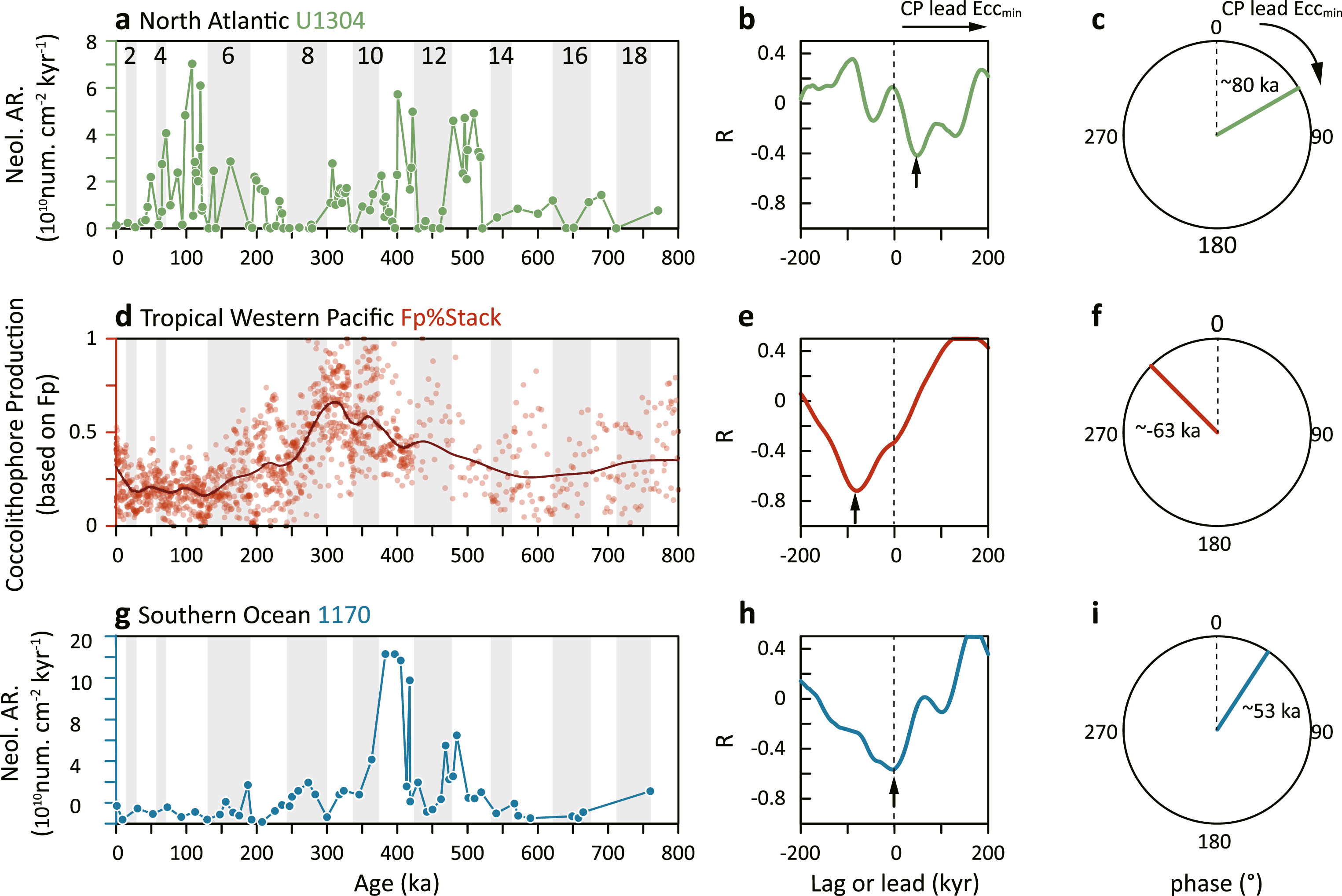Hongrui Zhang a b, Chuanlian Liu a, Iván Hernández‐Almeida b c, Luz María Mejía b d, Haowen Dang a, Heather M. Stoll b
aState Key Laboratory of Marine Geology, Tongji University, Siping Road 1239, Shanghai, 200092, China
bDepartment of Earth Science, ETH Zurich, Zurich, 80002, Switzerland
cNow at PAGES IPO, University of Bern, Bern, Switzerland
dNow at MARUM, University of Bremen, 28359, Bremen, Germany
Abstract:Periodic ∼405 thousand-year (kyr) variations in the ocean carbon cycle, manifest in carbonate dissolution and benthic carbon isotope, have been observed throughout the Cenozoic but the driving mechanisms remain under debate. Some evidence suggests that coccolithophore bloom events potentially contribute to these ∼405 kyr oscillations. However, there is no consensus on the mechanism responsible for these blooms. In this study, we investigate the timing and spatial pattern of the coccolithophore bloom events during the Mid-Brunhes period. We find that the peaks of coccolithophore productivity in the North Atlantic and Southern Ocean are centered at ∼480-430 ka, whereas peaks of coccolithophore productivity in the Western Pacific are centered at ∼350 kyr. We propose a dual high and low latitude control on blooms whereby, at eccentricity minimum, increased high-latitude diatom silica consumption lowers the seawater Si/P, decreasing the competitiveness of diatoms and resulting in a global coccolithophore bloom. Subsequently, as eccentricity increased, stronger tropical monsoons fueled coccolithophore productivity extending coccolithophore bloom in tropical oceans.
Full Article: https://www.sciencedirect.com/science/article/pii/S0277379125000460


